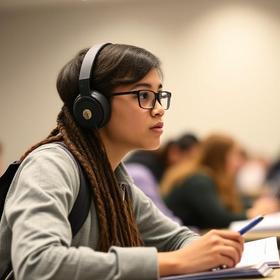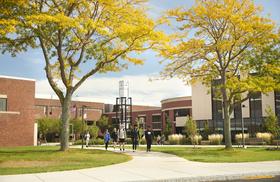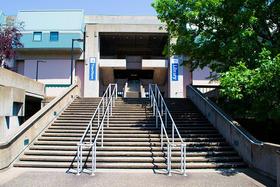The Impact of COVID-19 on Higher Education (2025 Update) Introduction
When COVID-19 first swept the globe in early 2020, few foresaw how deeply it would reshape higher education. The disruptions—campus closures, pivot to remote instruction, financial strain, deferred enrollment—sent institutions and students into uncharted territory. As we enter 2025, the aftershocks of the pandemic are still reverberating: some early adaptations have become permanent fixtures, while lingering inequalities and structural stressors remain. This article revisits the original themes through a 2025 lens, updating data, policy responses, and emerging trends, and offering guidance for students, families, and institutions preparing for the future.
Enrollment Volatility and Recovery
The immediate decline—and the rebound. In the early pandemic phase, colleges nationwide saw steep enrollment declines. According to the National Conference of State Legislatures, freshman enrollment dropped by 13.1% in fall 2020, and new international student enrollment fell by 43% in many institutions.NCSL That initial shock set off a cascade of consequences, especially for community colleges and two-year institutions. Over the ensuing years, many institutions struggled to regain lost ground.
By 2024, signs of recovery had strengthened. In fact, 2025 spring enrollment rose 3.2% compared to the prior year—marking one of the strongest year-to-year gains in recent American higher education history. Projection models from NCES suggest modest growth ahead: undergraduate enrollment is forecast to increase 8–9% between 2021 and 2031, with particularly strong gains in part-time and nontraditional students. Bestcolleges.com+1
At selective four-year institutions, however, recovery is uneven. A recent report from the Urban Institute (2025) highlights demographic shifts in applicant pools: declines in admits of Black students at highly selective colleges, rises in non-disclosure of race/ethnicity, and continuing overrepresentation of white students in admissions relative to applicant pools. These trends suggest that while numeric recovery is underway, deeper questions of equity and access still demand attention.
Who returned—and who is still missing
Much of the post-COVID rebound in enrollment comes from older learners, stop-outs, and adult students. Institutions have ramped up outreach to these groups, offering stackable credentials, flexible schedules, and remote or hybrid formats. The Lumina/Gallup 2025 “State of Higher Education” report notes that 57% of U.S. adults without a degree considered enrolling in the past two years, but emotional stress, finances, and mental health are key barriers to re-entry.
Meanwhile, international student numbers remain a concern. SEVIS data indicates an 11% decline in international enrollments between March 2024 and March 2025—a substantial revenue and diversity hit for many U.S. colleges. The U.S. may lose up to 150,000 international students in coming years, with potential losses nearing $7 billion.
Cost, Tuition, and Financial Strain Rising tuition and sticker price pressures
Even before COVID-19, tuition growth outpaced inflation. The post-pandemic era has not reversed that trend. For the 2024-25 academic year, average in-state public four-year tuition and fees rose to $11,610 (a 2.7% increase), while private, nonprofit four-year institutions averaged $43,350 (up 3.9%). Meanwhile, Education Data estimates for 2025 place the average cost of attendance (tuition, fees, room/board, books) at $27,146 for in-state public four-year students, and $58,628 for private nonprofit students. Education Data Initiative
Other reporting shows in-state public tuition at $24,920 (reflecting sticker rates) for 2024-25. These inflationary pressures force institutions to continually raise tuition, even as many grapple with flat or declining enrollments.
Net price, discounting, and aid gaps - A key nuance is the difference between posted tuition and the net price after grants, scholarships, and institutional aid. At public four-year institutions, first-time in-state students now pay a net tuition (after aid) of around $2,480 (in inflation-adjusted terms).
Yet the distribution of aid often favors higher-income students and legacy admits. The gap in net pricing across income tiers remains substantial, leaving many lower-income and first-generation students susceptible to debt or enrollment delays.
Student debt and delayed entry - One unintended effect of COVID-era disruptions was more students delaying or deferring enrollment, opting to save or enter the workforce instead of accumulating debt. For those who did enroll, debt loads remain heavy. The average student borrower pays around $2,636 in interest annually and often takes 20 years to repay. The specter of debt—and questions about return on investment—continues to influence decisions about whether to enroll, persist, or stop out.
Pedagogical Shifts, Technology, and Hybrid Models
From emergency remote teaching to blended learning
During the early months of the pandemic, nearly 84% of college students reported having some or all classes moved online. But what was once emergency remote instruction has matured into more sophisticated hybrid, flipped, and asynchronous models. Many universities now offer courses with a blend of in-person and synchronous/ asynchronous components—a format often labeled “hyflex.” Some institutions resist returning fully to the traditional lecture model.
Data from Deloitte’s 2025 Higher Education Trends research shows steady growth in trade school and apprenticeship enrollment (annual growth ~4.9%), emphasizing competency-based and applied formats over purely academic ones. Deloitte. Many colleges are adopting micro-credentials, stackable certificates, and modular degree frameworks to provide flexibility and responsiveness to labor market needs.
Technology investments and digital equity
To support hybrid and online models, colleges have invested heavily in learning management systems, video delivery platforms, analytics, and student support infrastructure. But the digital divide persists: low-income, rural, and marginalized students often face connectivity, hardware, or workspace constraints. Institutions continue to wrestle with how to ensure equitable access to high-quality instruction for all students.
Assessment, retention, and academic outcomes
Research suggests that COVID-era disruptions had asymmetric effects: students from disadvantaged backgrounds—first-generation, low-income, historically underrepresented groups—suffered greater declines in performance, course completion, and retention. Intervention models (early alerts, coaching, tutoring) have expanded in response. Some institutions now assume hybrid instruction by default and have reworked retention frameworks to better detect and support at-risk students earlier.
Institutional Resilience, Strategy & Policy Responses Budget stress and mission rebalancing
Colleges were hit by dual pressures: declining enrollment and increased operational costs (health safety, technology, facilities). Many institutions froze hiring, cut nonessential services, or delayed capital projects in 2020–22. NCSL+1 In 2025, this stress is less acute, but ongoing financial challenges remain. Some public systems (such as California State University) have approved multi-year tuition increases (6% annual hikes) to offset deficits.
To stabilize, institutions have reassessed program portfolios—phasing out low-enrollment majors, expanding workforce-aligned offerings (e.g., data analytics, cybersecurity), and forging partnerships with industry and community colleges.
Policy shifts and federal support
Federal relief (e.g., CARES, ARP, CRRSA) provided billions to colleges and students in 2020–22, cushioning the blow. As those waves recede, institutions increasingly look to federal and state policy reform—especially around debt forgiveness, Pell expansion, and accountability tied to completion and equity.
At the policy level, the shift to simplified FAFSA, revamped aid formulas, and performance metrics tied to student outcomes are reshaping how students qualify and how institutions compete. The Biden administration and Congress have debated expanding Pell eligibility to short-term and certificate programs, which could reshape enrollment dynamics. (See U.S. Department of Education policy proposals.)
Strategic differentiation
Institutions are also leaning into identity, niche, and mission-based differentiation. Some are doubling down on global education, research, or liberal arts; others emphasize career outcomes, upskilling, or regional service. More students now view college as a credentialing network, not just a four-year residential experience. That shift (accelerated by COVID-19) pushes institutions to be more agile, modular, and student-centered.
At the same time, vertical and horizontal consolidation in the higher education ecosystem has accelerated: smaller colleges are merging, forming consortia, or outsourcing services to reduce cost and risk.
Equity, Well-being, and the Human Side of Recovery
Mental health, belonging, and persistence
One of the most enduring impacts of the pandemic is on student well-being. Anxiety, depression, isolation, and burnout surged during and after shutdowns. Many students cite psychological stress as a key reason they paused or left their studies. The 2025 Lumina–Gallup survey finds 31% of stop-outs attribute emotional stress to their departure.Gallup.com
In response, colleges are expanding counseling services, embedding wellness support across programs, offering peer mentoring, and integrating flexibility into course policies (e.g. pass/fail, deadline extensions). But access often remains uneven and underfunded.
Equity in retention and recovery
Not all students returned equally. Underrepresented and first-generation students have been slower to resume enrollment, and their academic recovery has lagged. The Urban Institute’s findings of declining Black admits at selective institutions reflect that disparity. Institutions are piloting “bridge” programs, summer refreshers, and wraparound supports to re-engage students who paused during the pandemic.
The digital divide and access gaps
Persisting disparities in connectivity, device access, and learning environments continue to challenge equitable participation. Some colleges now issue laptops or Wi-Fi hotspots to all students; others partner with government or philanthropic agencies. The work is ongoing—and unequal access remains a critical barrier to scaling hybrid learning models.
Looking Ahead: Lessons and Prognosis What’s become normal—and what remains unsettled
By 2025, several COVID-era adaptations are now enshrined:
Hybrid, hyflex, and modular formats are common in undergraduate and graduate offerings.
Stackable credentials and micro-credentials provide pathways into or between degree programs.
Data-driven student support systems (early alerts, predictive retention analytics) are standard tools.
Higher expectations for flexibility, affordability, and real-world relevance guide student choice and institutional strategy.
Yet other questions remain in flux:
Will consolidation continue in the sector?
How will international enrollment trends evolve in response to U.S. visa, geopolitical, and competitive pressures?
Will policy reforms (Pell expansion, debt cancellation) meaningfully shift affordability and access?
Can institutions sustainably maintain support and innovation without adding cost or diluting quality?
For students, families, and educators: what to expect in 2025+
Plan flexibly. Many degree plans now assume hybrid or asynchronous modules—choose programs that allow fallback if in-person attendance becomes constrained.
Vet net cost, not sticker price. Focus on net price after aid, grants, and scholarships, not just headline tuition.
Explore alternatives. Apprenticeships, industry-aligned credentials, and trade programs are growing at ~4.9% annually and may offer faster return on investment.
Ask about student support systems. The strength of advising, mental health services, and academic recovery programs can significantly impact persistence.
Monitor institutional health. In an era of consolidation, smaller colleges may be more vulnerable; check endowments, dropout rates, and strategic plans.
From the vantage of 2025, COVID-19 did more than disrupt: it catalyzed transformation. Higher education is more flexible, more modular, style="line-height:1.38;margin-top:0pt;margin-bottom:0pt;">
Internal link example (for internal SEO):
For insights into earlier-stage education and how disruptions trickle upward, see our review of boarding school policies at PrivateSchoolReview.com.
External authoritative links (2):
U.S. Department of Education (for federal student aid and policy)
Forbes: “COVID-19 and College Admission: A Progress Report” Forbes















